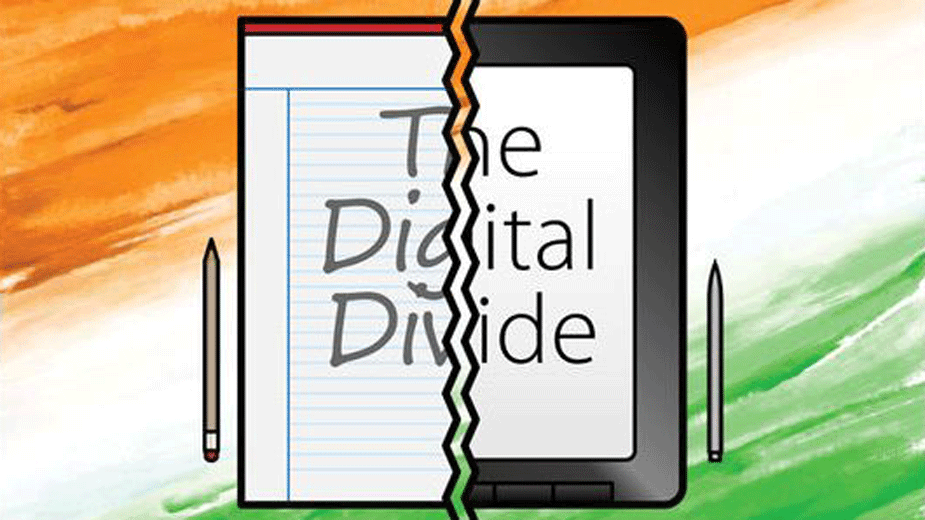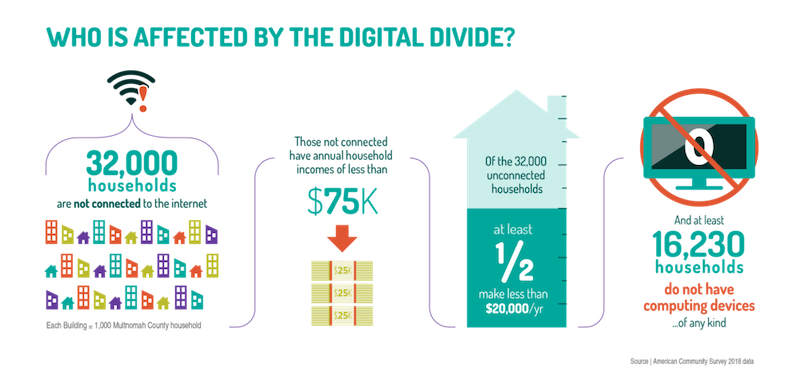It's now been over three years since the pandemic upended the education world as we knew it. Aside from forcing teachers into emergency instruction and compelling parents to worry about each child's intellectual and social development, other crucial factors also emerged. We knew there was a digital divide among our country's students, but we didn't all quite realize how bad it really was. As the remote learning era wore on, we learned more about access and equity and these statistics helped provide needed resources for those most deeply affected. But, what's caused this digital divide and can we come out on the other side?
What's Caused the Digital Divide?
There are many factors that have contributed to the digital divide over time. Whatever the case may be, the effects range from children being hindered in developing real-world skills, learning about new technologies, and, ultimately, lacking opportunities that other students do have. It often boils down to students (and even some parents) not having adequate access to the Internet or to connected devices—or maybe even having no access at all. This can also result from any number of potential factors and geographical location is one prime example. Families living in various remote places are much more likely to lack that type of necessary access—something we have seen put under the microscope after remote learning came into play. Without this access, unfortunately, opportunities for 21st century learning essentially pass some students by.
Some common causes of the digital divide.
Besides geographic factors, there are other reasons—typically out of students' control—for the divide. This includes the education level of their parents. Statistics show that college graduates are more likely to go on to enjoy typical access to technologies like the Internet. They are even more likely to enjoy the benefits that technologies like computers provide. In other words, students with parents who haven't always had access to common technology tools are less likely to have those opportunities to build digital literacy themselves. While income levels, geographical location, and digital proficiency can each contribute to the digital divide, it can also sometimes be a lack or parental buy-in.
Why it's detrimental to students.
Some parents simply don't want their children exposed to technology day in and day out. While misusing technology could certainly have its consequences, screen time can yield plenty of positive results as well. Basically, if not exposed to some form of productive technology, students risk falling behind their peers. In using it, they can develop simple tech skills and even problem-solving skills depending on how they use it. In any case, the scope of the digital divide hasn't lessened over time—at least not as of yet. With the mass availability of electronic devices, you'd think it might be easier to shrink this gap. As we've seen, however, this could simply result in creating a further divide for those initially impacted anyway.
How the Digital Divide Affects Students
While the digital divide persists, it's tough to make real progress in addressing it. The two most prominent groups of students who suffer from the consequences of this digital divide are those who have come from economically disadvantaged families and students of color. The most common impediment created by the digital divide is that children cannot complete homework assignments. As you'd probably expect, many of the homework assignments given to students require the Internet, which presents a problem for those who can't access it. It also plays a role in widening an already problematic divide. Over just the last three years, however, it's exposed an even bigger problem when some kids simply could not access their education.
Enabling learning for everyone.
As most schools closed down, not every student struggled with accessing computers and the Internet for daily class meetings or to just retrieve assignments. Most often, it was students of color and those in low-income families. Of course, distance learning also required strong Internet for live meetings in most cases and that was not always a guarantee. Then, there were the devices themselves. As many as 50 percent of students in these two groups didn't even have a device for remote learning. It also meant that school and district leaders had to spend money on laptops or hotspots and then find a way to deliver them to all these students—no easy task. While this took incredible time and coordination, it was the only way to ensure that every student could keep learning.
Examples of the digital divide affecting students.
Besides facing challenges in connecting with their teachers and accessing assignments, the digital divide can wreak additional havoc for some children. Without similar access, students could wind up falling short of their full academic potential, which has both short-term and long-term effects. In the short term, it could prevent them from learning new things and feeling good about accomplishing tasks. In the long term, they could fall behind peers if they're unable to develop similar competencies. This sometimes leads to another effect—students losing motivation. Knowing that they don't have the same tools as peers can cause some kids to withdraw emotionally and check out mentally. Aside from losing out on the convenience technology access provides, more severe examples may ultimately result in effects that are tougher to overcome.

Combatting the Digital Divide in Education
In today's day and age, it may seem tough to fathom just how many students go without easily accessible technology. As their needs to be connected continue to grow, however, the discrepancy remains apparent. Until this gap is eliminated, it'll continue to plague everyone involved. Everyone from our state and national leaders to parents, teachers, and students themselves are affected by this problem. Going about tightening the gap, however, is not a cut and dry solution. Since different students are affected by the digital divide for different reasons, we'll need unique attempts to combat it. In rural areas, for example, the issue is different than it is for kids in low socioeconomic areas. Ultimately, it usually comes back to creating greater equity.
Solutions may seem obvious, but are often unattainable.
We're relying on technology more than ever and this is equally true for students. They need it to learn new skills, connect with others, and sometimes to simply access these learning experiences. At the most basic level, the best way to help combat the digital divide is to increase technology access. Even if this means increasing technology in public places, like libraries, then that's at least a start. A better solution would be to ensure every child has Internet and a reliable device at home. This is, of course, tougher to accomplish, but it is impossible to ignore how those without this access to digital tools tend to miss out. Besides that, educators and local leaders could also work together to spread awareness in disconnected communities. This is one way to increase knowledge surrounding this issue and to advocate for technological literacy.
The best opportunities for change.
In order to ensure equal access to technology, it's important to start with economic equality. In low-income households, the parents might need help paying for the technology. Identifying those in need and providing financial assistance is one option. Another is to create and publicize community centers where the children could go to access what they need. This would also help community leaders see technology as a necessity rather than a privilege. Finally, it may take more than state and local officials to get the job done. STEM and technology professionals can even play a role. In advocating for the shrinking of the digital divide, they can use their own experiences as an example. Seeing how access can affect so many, it could help create and fuel programs that help students acquire and leverage technology for better learning experiences.
What We Learned During the Pandemic
The pandemic itself was an enormous learning experience for education officials and, frankly, everybody else involved in homeschooling a student. In fact, it is still probably not difficult to find somebody who was simply unaware of just how troublesome the digital divide was—either before remote learning efforts began or once they were well underway. Technology was all but essential for a year in order for students to simply receive their education. It wasn't equally accessible, however, and students from the low-income and rural communities took the worst of it. Going back to what we've learned, the statistics concerning connectivity are certainly eye-opening. And, more than that, they paint a picture of inequity, struggle, and the absence of solid solutions to the digital divide.
Statistics about connectivity.
With all the focus on ensuring equity, knowing the facts is key. According to FCC officials, 97 percent of US citizens who live in urban areas have easy access to high-speed Internet. This meant that students in these locations had it much easier when navigating remote learning. Conversely, only 65 percent of US citizens in rural areas have that same access. On top of that, only 60 percent of people living on tribal lands enjoy that access. This, of course, paints a clear picture of different groups of people with different socioeconomic or ethnic backgrounds enjoying the benefits of digital infrastructure in vastly different ways. What's also fairly disheartening is that it's nearly impossible for families in these kinds of situations to make much headway. Without reliable Internet access, it's tougher and tougher for them to decrease inequities.
Creating potential solutions.
Despite knowing its impacts, there are still lots of hurdles to overcome with chasing total equity. One of the potential solutions lies in developing strong 5G networks. This, however, likely requires government officials and network leaders working together on a long-term solution. With a successful rollout, however, it's more likely that all children would benefit from greater access to the technologies they need. It could also lead to greater sustainability and inclusion, especially in the communities that are most affected. It will take a lot of cooperative efforts to really move toward true inclusion, but some of these emerging technologies really do seem promising. Without this connectivity, however, the digital divide will likely never fully go away.

Steps to Lessening the Digital Divide for Students
Although the digital divide plagues more than just school-aged kids, it is certainly our focus to understand how it affects students. And, don't get us wrong, school leaders have done a lot to minimize or, at least, to mask some effects in many cases. Whether that's securing funding for a 1:1 technology plan or working with officials to boost collaboration, we know the intent is certainly there. It often begins with getting those devices in the hands of students. Then, from there, they need educational software, security software, and communication software. This ensures students can access all classroom content in a safe way and share their work with educators for review.
Solutions teachers can try.
One step to decreasing the digital divide is for educators to adjust the resources they use. Of course, many different educational resources these days are electronic. And, many others require Internet access for kids to view them. If educators could utilize downloadable materials, however, this could help any students with poor or no Internet access. They could also attempt to dole out assignments that don't require Internet use to help foster equity. Additionally, all teachers and administrators must be aware of the amount of students who have connectivity issues at home. Knowing this information can factor into the digital support they will provide for students while they're in the school building.
Using all available resources.
Just through regular conversations alone, most school administrators are probably aware that teachers and parents have tried many creative approaches to combatting the digital divide. There are resources available but, of course, there are also the costs. School leaders can try to establish various community partnerships that help their students. At community centers, for example, there is typically Wi-Fi that students can easily access at a place near their home. Whether this is a library or a club, knowing it could be available to them could add a sense of relief for parents and students. Also, some Internet companies offer low-cost access for children in these types of situations. Learning about this option can help administrators supply parents with accurate information and help increase the chances of moving past any digital divide that's lingering.
If you see the digital divide affecting students in your school or district now or it did at any point during the pandemic, we'd love to hear about it. Feel free to leave a comment below or get in touch with us to share your insight. For all EdTech, STEM, and 21st century education news, follow us on Twitter and Instagram. Like us on Facebook, too, or sign up for our newsletter for product announcements and offerings.



